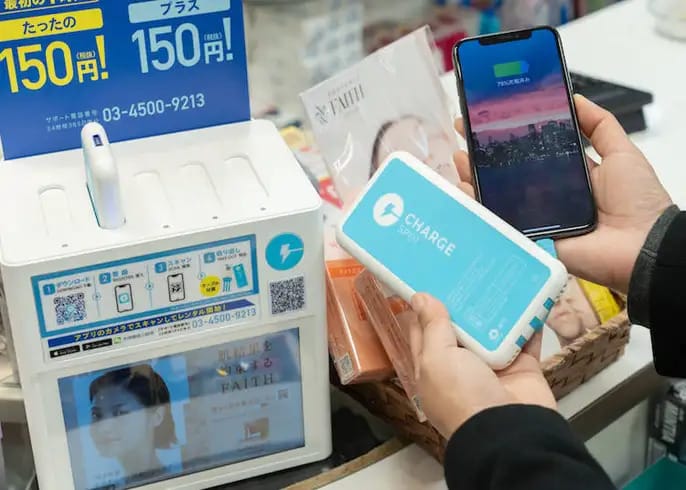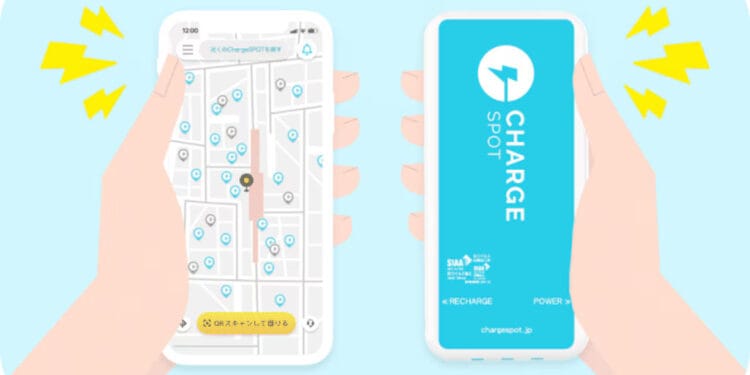No products in the cart.
ChargeSPOT and the Evolution of Portable Charging in Japan:
In today’s digital age, the anxiety of a dwindling smartphone battery is a universal experience. In Japan, this concern has been addressed innovatively through the evolution of portable charging solutions, culminating in services like ChargeSPOT. This article delves into the history of portable chargers in Japan since the late 2000s and explores how ChargeSPOT has revolutionized on-the-go charging.
The Emergence of Portable Charging Solutions in Japan
As smartphones became ubiquitous in the late 2000s, the demand for reliable power sources grew exponentially. Early solutions in Japan included the sale of portable battery packs in electronics stores and convenience shops. These devices allowed users to manually recharge their phones but required foresight to carry and maintain. Around 2007 and 2008, public charging stations began appearing in urban centers, offering a place for users to plug in their devices. However, these stations were stationary, limiting user mobility during charging sessions.
The Advent of Mobile Battery Sharing Services
Recognizing the limitations of stationary charging stations and the inconvenience of carrying personal battery packs, innovators introduced mobile battery-sharing services. ChargeSPOT, founded in Hong Kong in 2017, expanded its services to Japan in April 2018, becoming the nation’s first mobile battery-sharing service. Operating under the concept of “Rent Anywhere, Return Anywhere,” ChargeSPOT installed rental stations in high-traffic areas such as train stations, airports, convenience stores, and entertainment venues. This network allowed users to rent a portable charger from one location and return it at another, enhancing convenience and flexibility.

How to Use ChargeSPOT
Renting a portable charger through ChargeSPOT is simple and convenient. First, users need to download the ChargeSPOT app, which supports multiple languages, including English. The app provides a real-time map showing nearby rental stations, making it easy to find a location when your phone battery is running low.
Once at a station, users scan the QR code on the machine to release a portable charger. Each charger comes equipped with three types of connectors—Micro USB, Type-C, and Apple Lightning—ensuring compatibility with most smartphones and devices.
The rental cost is budget-friendly, starting at ¥150 for the first hour. If more time is needed, an extra ¥150 covers up to 48 hours. Payments are made directly through the app, supporting various cashless options for a smooth and hassle-free experience.
Expansion and Accessibility
Since its inception, ChargeSPOT has experienced rapid growth. As of June 2023, the service boasts over 40,000 rental stations across Japan, solidifying its position as the country’s leading mobile battery provider. The widespread availability of stations in diverse locations—ranging from urban centers to rural areas—ensures that users can access charging solutions wherever they go. This extensive network not only caters to residents but also provides a reliable resource for tourists navigating unfamiliar territories.
Integration with Daily Life and Tourism
ChargeSPOT’s integration into daily life is evident through its presence in commonly frequented places such as convenience stores, shopping malls, restaurants, and even karaoke parlors. For travelers, the service is particularly beneficial; rental stations are strategically placed in major transportation hubs, including international airports like Narita, Kansai, Fukuoka, and New Chitose, as well as main train stations such as Tokyo, Kyoto, and Shin-Osaka. This strategic placement ensures that both locals and visitors have convenient access to charging solutions, reducing the stress associated with low battery levels during critical moments.
Economic and Environmental Impact
The success of ChargeSPOT reflects a broader trend in Japan’s sharing economy, where access to services is prioritized over ownership. This model not only offers economic benefits by reducing the need for individuals to purchase personal chargers but also promotes environmental sustainability. By facilitating the shared use of portable batteries, ChargeSPOT minimizes electronic waste and encourages the efficient use of resources. Additionally, the service’s cashless payment system aligns with Japan’s increasing adoption of digital transactions, further streamlining the user experience.
Future Prospects
Looking ahead, ChargeSPOT aims to continue expanding its network and enhancing its services. Plans include the installation of stations in emerging urban developments, such as the upcoming Yumeshima Station, in anticipation of Expo 2025 in Osaka. This proactive approach ensures that ChargeSPOT remains at the forefront of mobile charging solutions, adapting to the evolving needs of users and technological advancements. As the demand for seamless, on-the-go charging continues to grow, ChargeSPOT’s innovative model serves as a blueprint for similar services worldwide.
Conclusion
Japan’s approach to portable charging has evolved significantly, from fixed charging stations and bulky power banks to the rise of battery-sharing services. ChargeSPOT has emerged as a key player in this shift, providing a convenient and accessible way for people to keep their devices powered on the go. With an extensive network, strong industry partnerships, and a focus on user convenience, it has seamlessly become part of everyday life in Japan. As the need for constant connectivity increases, innovative services like ChargeSPOT will likely continue to expand, ensuring that staying charged is easier than ever.










